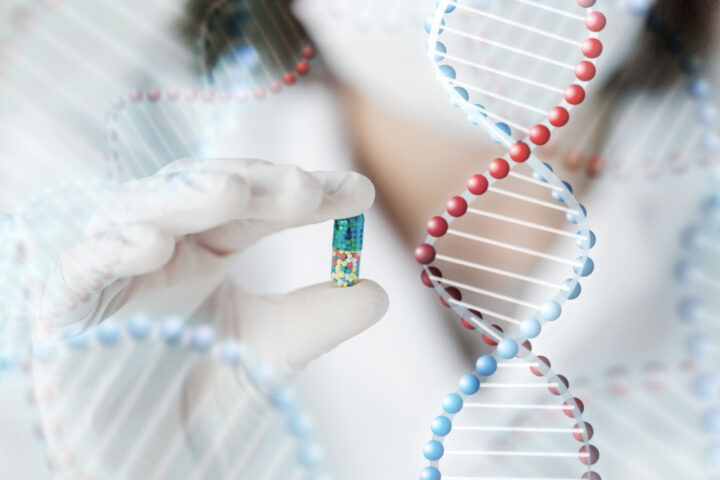The Quiet Engineers of the Tumor Microenvironment
In the complex, microscopic world of ovarian cancer, there’s a lesser-known cast of characters that doesn’t get the spotlight but plays a central role: cancer-associated fibroblasts (CAFs). These are the diligent engineers behind the scenes, constantly remodeling the “tumor architecture” in ways that can significantly impact a patient’s prognosis.
To understand ovarian cancer treatment, let’s first dive into the unique ways CAFs interact with cancer cells and the recent scientific breakthroughs shedding light on their role in therapeutic resistance. With ovarian cancer remaining one of the deadliest gynecological cancers—where almost 70% of cases relapse due to chemotherapy resistance—the insights from studies on CAFs offer a beacon of hope for more precise, effective therapies.
The Subtypes and Secret Strengths of CAFs
Cancer-associated fibroblasts aren’t just one homogenous group; they’re a diverse community with specialized roles. Recent studies identify three main subtypes: desmoplastic CAFs (dCAFs), inflammatory CAFs (iCAFs), and myofibroblastic CAFs (myCAFs).
- dCAFs are the architects of the extracellular matrix (ECM), constructing physical barriers that make it harder for drugs to reach tumor cells. In ovarian cancer, these dCAFs are associated with poor outcomes, as they create a stiff, fortified environment where cancer cells can thrive.
- iCAFs act as inflammatory mediators, producing cytokines that signal nearby immune cells, sometimes even recruiting them to support the tumor rather than fight it. In some ways, iCAFs set up a distress signal that’s been hacked by the cancer, turning what would be an alarm into a lullaby for tumor growth.
- myCAFs, on the other hand, resemble the contractile cells of smooth muscle and help in wound healing—another hacked process. These myofibroblasts support the infrastructure, making room for the tumor to grow and assisting in the metastasis journey, helping cancer cells escape their original site and spread.
Each subtype interacts differently with tumor and immune cells, and together, they create a “microenvironment” that not only supports but actively fosters cancer progression and resistance to treatment
Why Do Tumors Need CAFs?
The presence of these CAF subtypes in ovarian cancer provides the tumor with several key advantages:
- Structural Reinforcement: dCAFs weave a web of collagen and other ECM proteins, making the tumor difficult to penetrate, which can protect it from immune cell attacks and drugs.
- Chemotherapy Resistance: In a disturbing twist, some studies show that CAFs, especially dCAFs, contribute to platinum resistance—a mainstay drug in ovarian cancer treatment. These CAFs pump up collagen, which stiffens the tumor tissue, making it less responsive to treatment.
- Immune Modulation: The inflammatory signals from iCAFs can create an immunosuppressive environment, which means that T-cells and other immune cells have a harder time recognizing and attacking the tumor.
It’s as if the tumor is wearing an armor of its own making, with the helps personal blacksmiths.
CAFs and Therapeutic Resistance: Breaking the Barrier
One of the most compelling aspects of CAF research is its potential to address chemotherapy resistance in ovarian cancer. Patients with high levels of dCAFs generally face poorer outcomes and shorter survival times, especially when tumors develop resistance to platinum-based therapies.
Studies have identified specific genes in dCAFs linked to platinum resistance, such as POSTN and SFRP2. These genes are expressed more in resistant tumors, and their presence correlates with an increase in collagen production around tumors, further solidifying the physical barriers against treatment. This has inspired scientists to consider “CAFs as targets”—identifying unique surface proteins on CAFs that can be directly targeted to disrupt their tumor-supportive roles.
Hope on the Horizon: Therapies Targeting CAFs
The idea of dismantling the tumor’s protective armor has led to experimental therapies aimed at deactivating or altering CAF behavior. One promising approach is targeted anti-CAF therapy. By using drugs that specifically target proteins expressed on CAFs, researchers are exploring ways to weaken the tumor microenvironment.
For example, GPR77 antibodies target CAFs that are particularly resistant to traditional treatments and help enhance the efficacy of chemotherapy. And while these treatments are still in early stages, preliminary trials have shown that disabling certain CAF subtypes can reduce resistance and improve drug delivery to tumor cells.
Another potential avenue is CAF-modifying agents that prevent CAFs from producing so much collagen. By reducing the “armor,” drugs can more effectively penetrate and reach the cancer cells themselves, rendering even notoriously resistant ovarian ulnerable to treatment.
: Diagram showing GPR77 antibodies in action, deactivating CAFs and making tumor cells more accessible to chemotherapy.
What’s Next: Turning CAFs Insight into Action
With every new finding, the focus sharpens on the potential of CAFs as therapeutic targets in ovarian cancer. Researchers are also exploring CAF modulation in combination with other therapies, like immunotherapy, to maximize their impact.
Imagine a future where ovarian cancer treatment begins not by targeting the cancer cells themselves but by dismantling the fortress CAFs have built. By clearing the path, therapies could work as intended, significantly improving outcomes for patients with resistant ovarian cancers. The journey isn’t over, but the map is becoming clearer, and the role of CAFs in the treatment landscape is evolving rapidly.
As researchers continue to decode CAFs, the hope is to not only extend survival but transform ovarian cancer from a formidable adversary into a treatable condition.
In the Lab and Beyond: The CAF Revolution
The breakthrough understanding of CAFs has ushered in a new era in cancer therapy. By tackling these often-overlooked cellular architects, scientists are opening doors to treatments that don’t just aim for remission but offer a quality, sustainable life for patients. The fight against ovarian cancer is far from over, but the addition of CAF-targeted therapies brings us a step closer to leveling the playing field.
This ongoing revolution underscores a broader truth: understanding the support systems of cancer cells can be as important as targeting the cells themselves. And as CAF research continues to gain momentum, the future looks increasingly promising for those affected by ovarian cancer.
Sources
- Wan, S., et al. (2024). Integrated transcriptomics identifies prognostic significance and therapeutic response of cancer-associated fibroblast subpopulations in ovarian cancer. Aging, 16(7), 1342–1353.
- Zhang, M., et al. (2023). “The Role of Cancer-Associated Fibroblasts in Ovarian Cancer.” MDPI Cancers, 14(11), 2637.













